Ruins of Uzurano Airfield and “sora Kasai” : Interacting with numerous war remains and a life-size model of the fighter aircraft “Shidenkai”.
Kasai city, where the local line Hojo railway Line runs, is also famous as “Kasai, city of flying hot-air ballon”. Beautiful hot-air ballons sore into the sky in the early morning from November to May. Also, the remains of Uzurano Airfield, which was used to train pilots during World War II, still exist.
Even though there are many remains of World War II throughout Japan, it its rare to see so many gathered in one area. Let’s tour the sites one by one on foot from the station.
Touring around the ruins from Hokkeguchi station
Hokkeguchi station, on the Hojo Railway Line, is popular for its retro station building and hamburger restaurant called “Imaya-no-burger”. As you exit the station building and cross the railroad crossing on the right, you will see the orange line of a hiking trail that will take you around the war remains.
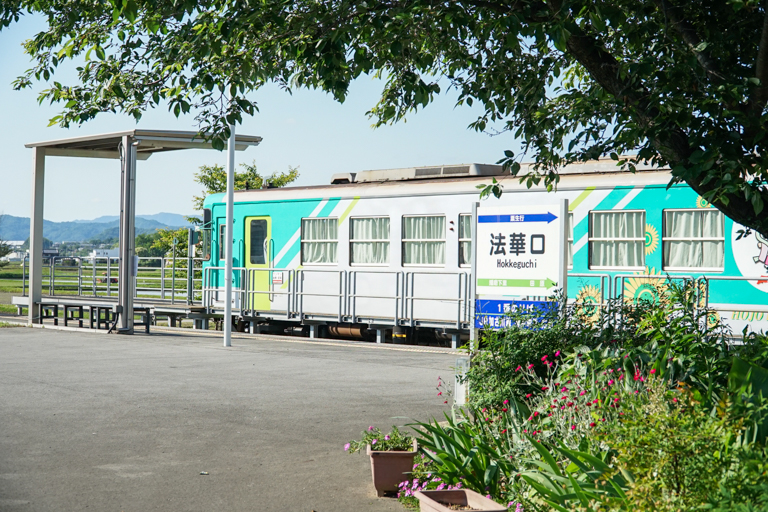
The “History of the remains of Uzurano Airfield and ruins of the Machine Gun Seat course” is an about 6.5km round trip. It takes several hours if you visit the site on foot, but in Hokkeguchi station, you can also rent a bicycle. “Imaya-no-hamburger Hyogo”, inside Hokkeguchi station, also lends bicycles (they are to be returned at the station).
“Gatepost and Guardhouse” and “Air-raid shelter”
Walking for about 1 km from the station, you will see the gatepost and guardhouse that were once the entrance to the base. Here, there is a gate that says “Himeji Naval Air Force” and a guard house, which resembles a former visiting room, and the foundation of the gatepost is on display.
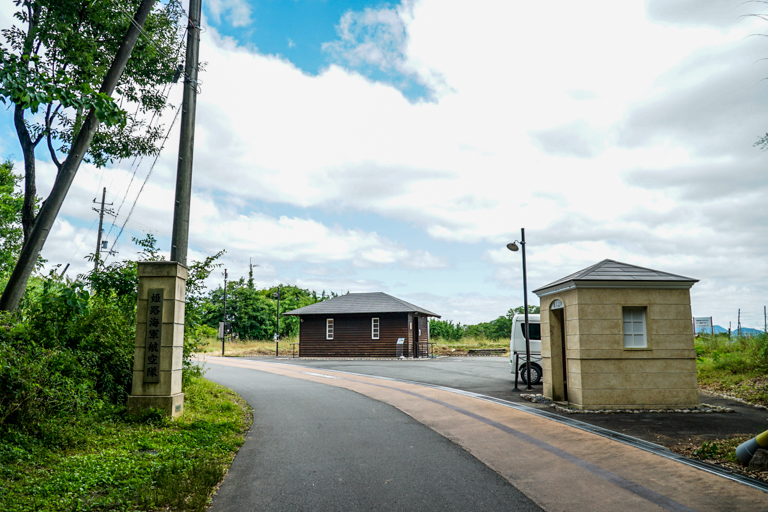
2 air-raid shelters in the bamboo forest at the front were for guards to escape in the event of an air raid. These air-raid shelters are connected in a crank shape. The reason for this is said to be to cushion bomb blasts coming in from the entrance.
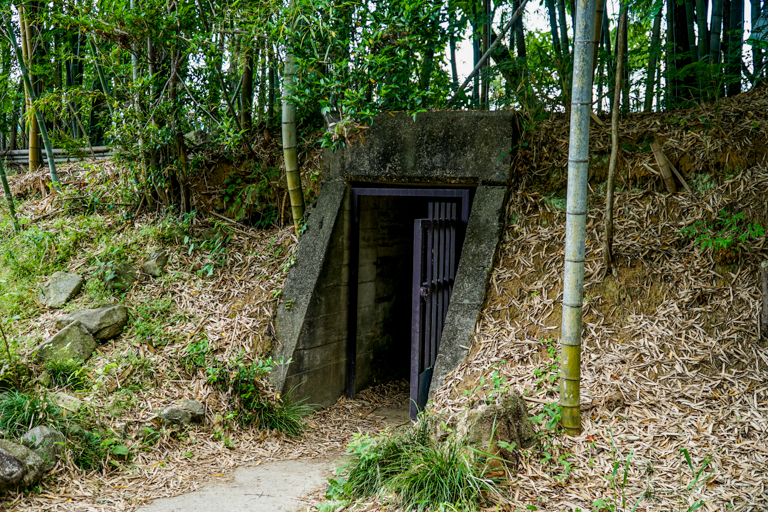
「Remains of the Anti-Aircraft Machine Gun Seat」
Walking furhter, going through the gateposts and the guard station, you will see the remains of an anti-aircraft machine gun seat. It is really rare for a machine-gun seat, that intercepted attacking planes, to have been preserved in its original condition. At the center, a replica of the anti-aircraft machine gun used in those days has been installed.
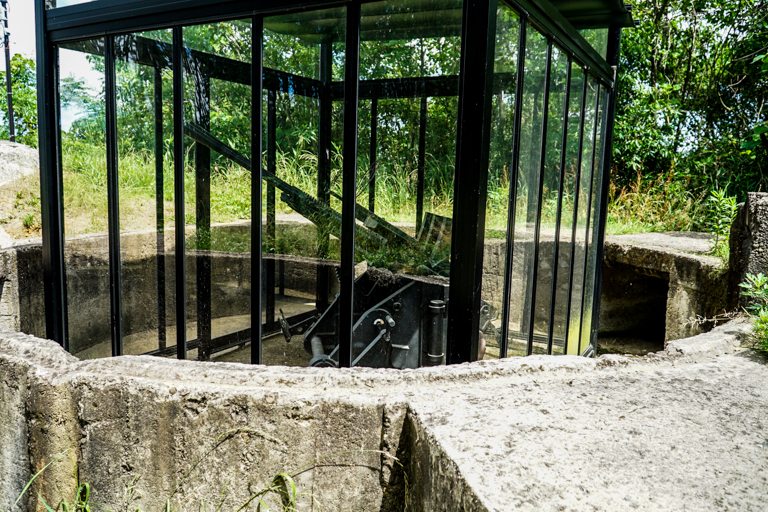
This machine gun seat could fire 230 rounds in a minute to a distance as far as 5000 meters. People at the time went through the underground passage from the entrance that looks like an air-raid shelter, fired the gun, and fled to a nearby hole when it became dangerous.
Powerful ! The “sora Kasai” and its life-size model of a fighter plane
After visiting various places and walking for a while, you will reach an open space. This is the site of a 1.2 km runway used at the time, and at the end of it is the museum “sora Kasai”.
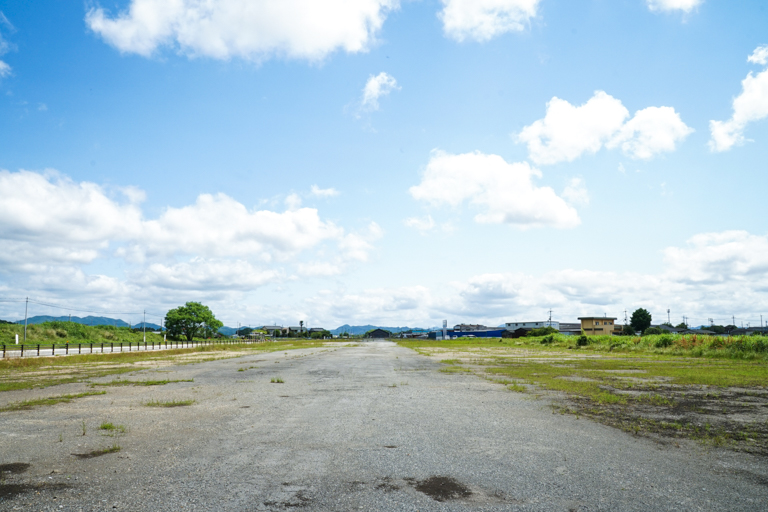
▲Ruins of a runway that leads to “sora Kasai”
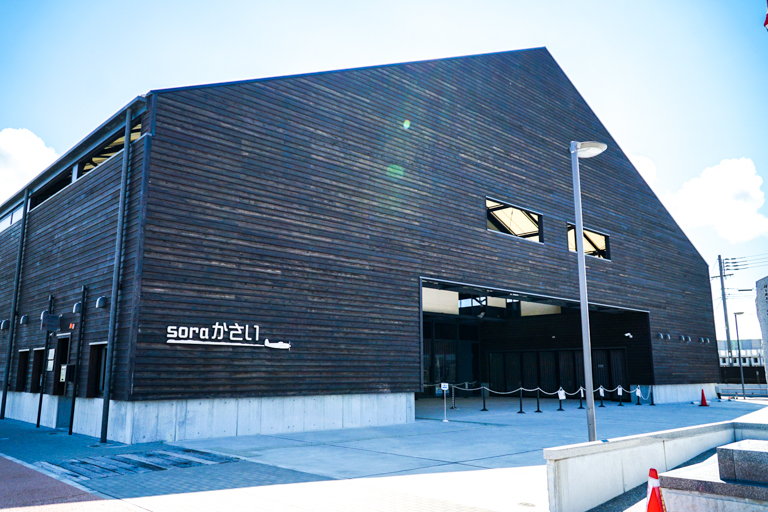
“sora Kasai” mimicks an aircraft warehouse
After you purchase a ticket and enter “sora Kasai” museum, you will witness a full-scale model of an impressive fighter plane !
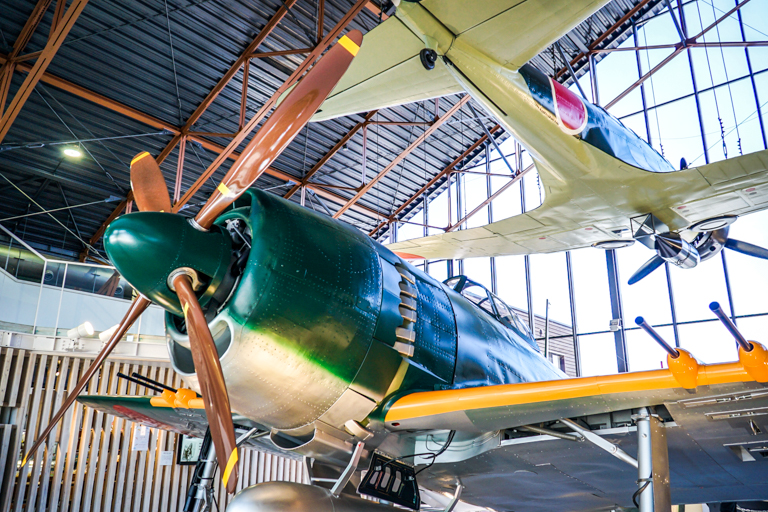
▲Full-scale model of a "Shidenkai"
A fighter plane called “Shidenkai”, which is about 12 meters wide and 9.35 meters long, was assembled at the factory located southwest of the runway, and was restored with records at the time. It was a new and improved version of an airplane called “Shiden”, and its firepower and speed were reported to be quite impressive in postwar test evaluations using high-quality U.S. gasoline.
On display above the “Shidenkai” is a plane called “Type 97 Carrier Attack Aircraft”, which was also used as a kamikaze attack-aircraft.
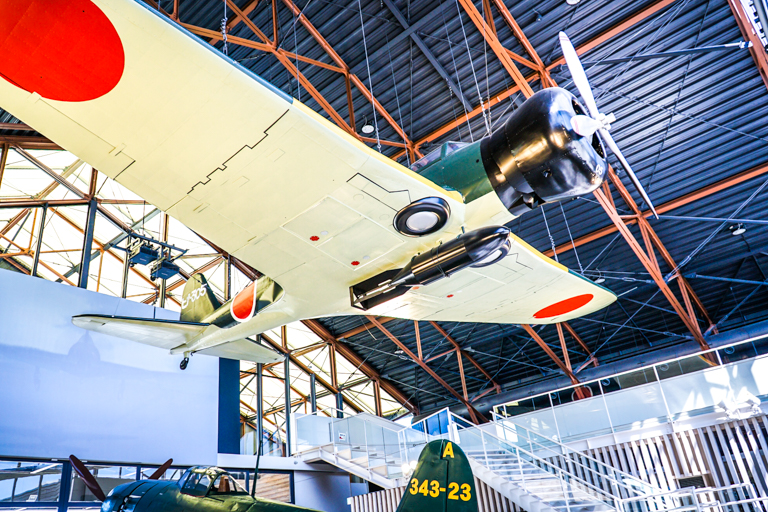
▲Type 97 Carrier Attack Aircraft displayed as if actually flying
The cockpit area has also been recreated, showing that the pilot, communication officer, and reconnaissance officer were all in one plane. The kamikaze attack was carried out without parachutes and with only enough oil for a one-way trip to the enemy ship (there are various theories).
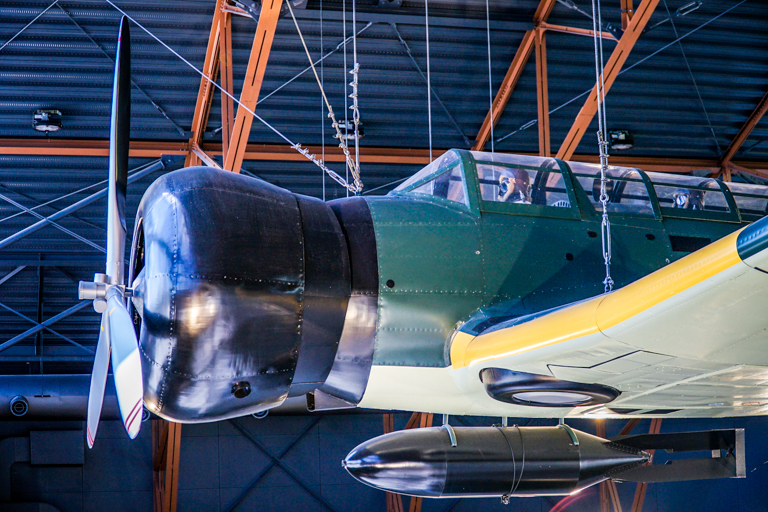
▲You can see the cockpit area well from the second floor
In "sora Kasai", in addition to the "Shidenkai", a video tells the story of the three years from the beginning of the construction of Uzurano airfield to the end of the war, as well as exhibits of equipment of the time.
Don’t miss out the “sora café” and the shop built next to "sora Kasai" too! You can enjoy sora teriyaki burgers using fresh vegetables grown in Kasai and “Blue sky sparkling lemonade” inspired by the refreshing blue sky.
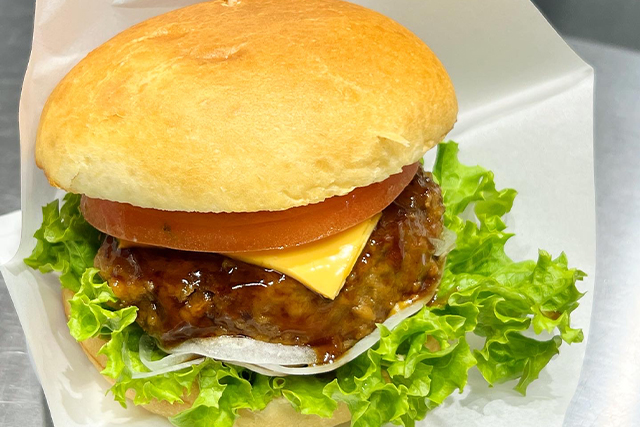
At the store, soy sauce from a long-established soy sauce shop, locally produced sake, and sora Kasai’s original madeleines and stickers are also sold.
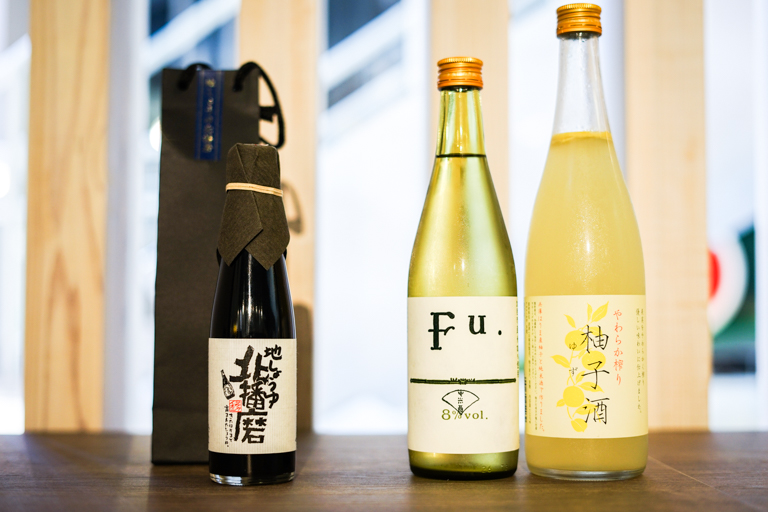
▲Local sake and soy sauce from Sakai are for sale
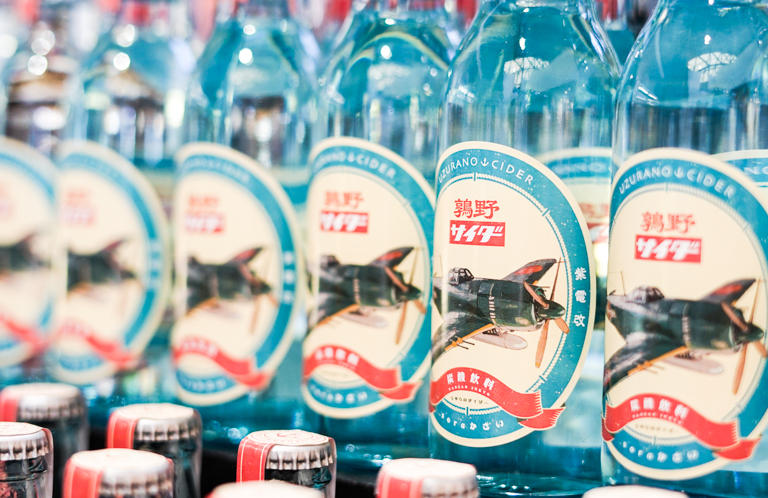
▲“Uzurano cider” is also very popular
In Kasai city, about 80 years after the war, hot-air balloons fly in the sky early in the morning during the flying season (November to May).
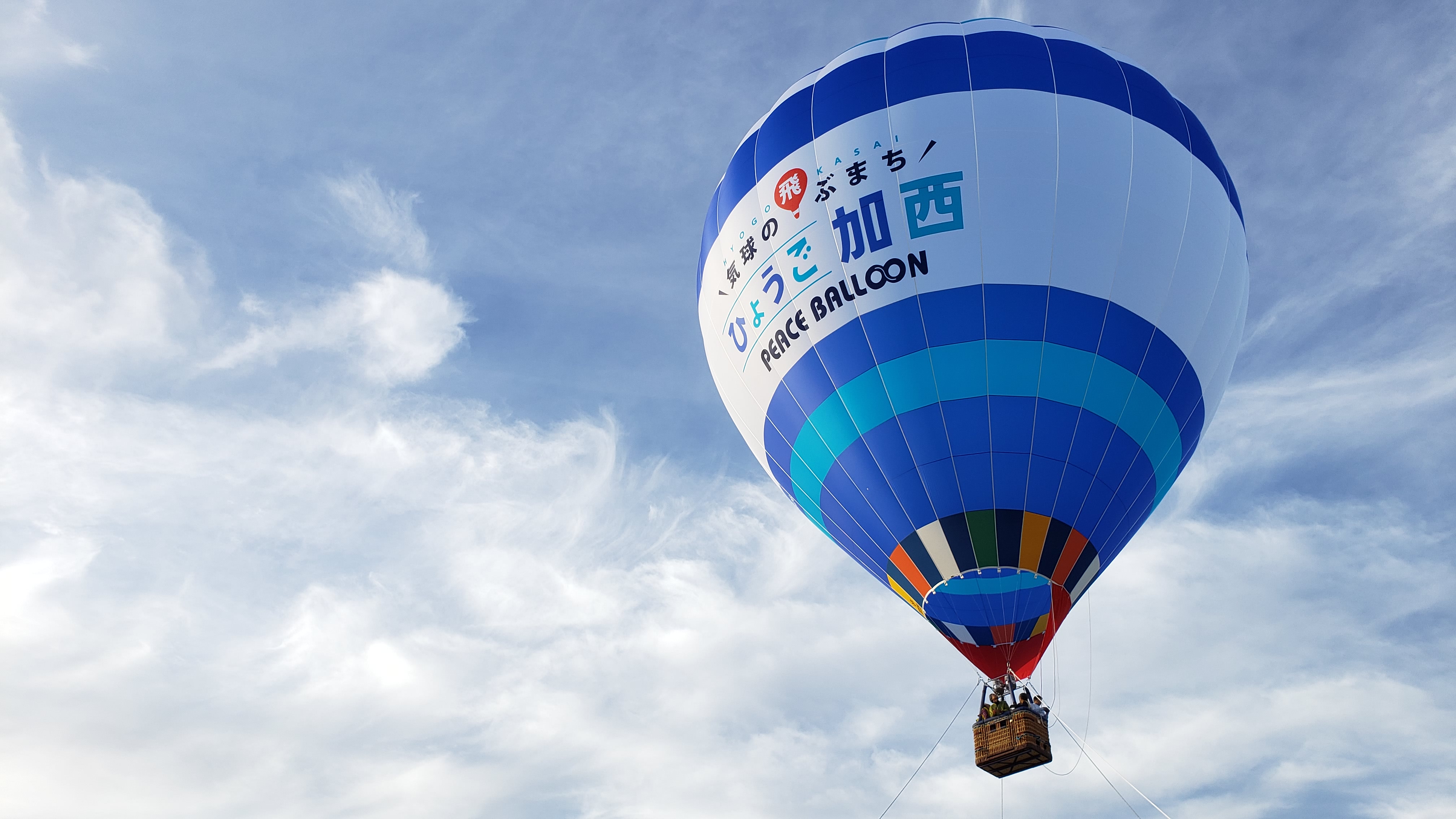
※For more information regarding the “History of the ruins of Uzurano airfield and ruins of anti-aircraft machine gun seat walking course” introduced in the article, please click here!
sora Kasai
Address: 2274-11 Uzurano-chou Kasai-city Hyogo-prefecture 675-2103(Google map)
Available time: 9:00〜18:00
Closing days: The 2nd and 4th Mondays (if Monday is a holiday, we close the next day), year-end and New Year holidays
Admission fee: Adults 200 JPY, Free for middle school students and younger
Japanese Website: https://www.sorakasai.jp/



